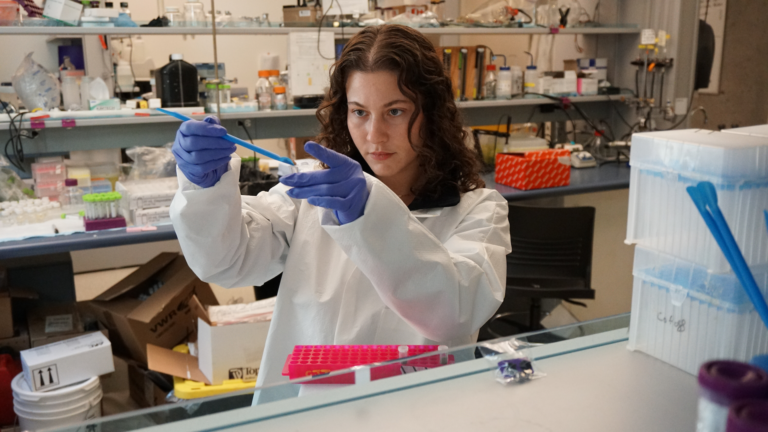UBC releases 2019 animal research statistics
UBC’s summary of animals involved in research at the university in 2019 is now available.

UBC’s summary of animals involved in research at the university in 2019 is now available.
This is the tenth consecutive year the university has published the data. UBC is one of only three Canadian universities to publish animal research statistics annually. The university publishes the data as part of its overall commitment to openness and transparency.
The data was collected for UBC’s annual report to the Canadian Council on Animal Care (CCAC), a national organization that oversees the ethical use of animals in science.
“Research involving animals at UBC is crucial as our researchers work to understand and develop treatments for diseases and medical conditions that cause human suffering globally,” said university veterinarian Ian Welch.
“Our dedicated and passionate researchers also observe and study animals in order to improve animal health and to understand their behaviours so we can shed light on conservation and preservation efforts around the world.”
Key to all work involving animals at UBC is the commitment to develop research methods that reduce, refine and replace animals involved in research whenever possible, Welch added, and to ensure all animals receive unparalleled levels of care.
Procedures are reviewed and approved by the university’s Animal Care Committee, which is made up of research experts, licensed veterinarians and community representatives.
In addition to sharing statistics, UBC provides a virtual tour of its animal care facilities here. For information on UBC’s 2019 animal research statistics, as well as information about the medical and scientific discoveries achieved through that research, visit animalresearch.ubc.ca.
Background: Animals involved in UBC research in 2019
In 2019, a total of 151,239 animals were involved in 642 research and teaching protocols at UBC. That’s a decrease of 11 per cent from 2018 when 169,273 animals were involved in 675 research and teaching protocols.
More than 96 per cent of animals involved in UBC research were rodents, fish, reptiles and amphibians.
The number of large mammals involved in research decreased to 1,194 in 2019 from 1,553 in 2018.
The majority (56 per cent) of animals in research at UBC remains rodents, but that number also fell to 85,263 in 2019 from 96,499 in 2018.
The number of animals in research involving breeding was 5,041 in 2019, compared to 7,508 in 2018. Under the category of breeding, we record only those animals where breeding is the research project.
More than 45 per cent of the animals (68,780) were involved in procedures that cause less than minor or short-term stress (CCAC Categories of Invasiveness B and C). These include observations of animal behaviours, blood sampling, tagging and tracking of wild animals.
The number of animals involved in Category D procedures (moderate to severe distress) decreased by 13 per cent in 2019 compared to 2018.



